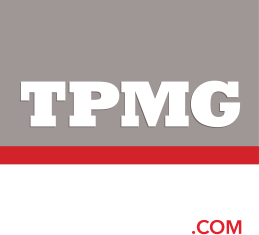If handled correctly, a million pounds of scrap can be solvent
If handled correctly, a million pounds of scrap can be solvent
July 2014 - When trees change color and crisp temperatures bring about earlier evenings, many bow hunting enthusiasts gear up for deer hunting. They will set up trail cameras or prepare by scouting during the preseason. Then they wait. Often up high in tree stands, hunters sit from early morning until shortly after sundown. When a potential target approaches, a hunter takes a deep breath, takes aim at the heart, and exhales, releasing the arrow.
 Scouting, planning and preparing includes purchasing equipment, and many hunters turn to Mathews Inc. for their archery needs. Since 1992, the company has produced bows and archery equipment, building a respected brand.
Scouting, planning and preparing includes purchasing equipment, and many hunters turn to Mathews Inc. for their archery needs. Since 1992, the company has produced bows and archery equipment, building a respected brand.
Mathews makes bows from Grade 6061 aluminum. It uses 49 CNC machines, and the rate at which each machine works varies, depending on the job at hand.
“In most instances, we only retain about 30 percent of the aluminum within the finished product,” says Scott Jenkins, Mathews’ machine shop manage. “For example, if you have 100 pounds of aluminum to start, you end up keeping only 30 pounds. The rest is recycled.”
That volume of scrap quickly adds up. Jenkins finds it fascinating how much material must be removed to create a finished product. “Think of it this way: if you start with a 2-foot by 4-foot piece of aluminum, imagine making a hair comb no larger than 1⁄4-inch thick, 6 inches long and 1 inch wide—that gives you an idea about how much you’re throwing away.”
Cultivating coolant
Up until recently, the company relied on storing scrap in large plastic totes, which would leak, “leaving a mess all over the shop floor, bringing all the hazards that come with that,” Jenkins recalls. “So when we built our new facility, we needed to look at a new way to process our chips.”
In addition, “when you’re thinking about putting in a scrap system, it needs to have the right volume. We accumulate right around a million pounds of scrap a year and we needed a better way to combat messes and safety hazards while making the process more convenient.”
Prab Inc. representative John Gulledge, president of Gull Material Handling Co., Barrington, Illinois, worked with both Jenkins at Mathews and with United Milwaukee Scrap LLC, Milwaukee, Wisconsin, to find a solution. United Milwaukee Scrap purchased the chip processing system installed at the Mathews facility based on a negotiated scrap rate. The joint effort has resulted in an increase in return on the aluminum used at Mathews, going from 15 percent moisture content before the chip processing system to less than 1 percent afterward.

The automated system starts with carts that are wheeled from each machine to the central processing system. The cart is then locked into the hydraulic cart dumper. An operator uses a handheld control to empty the cart of coolant-soaked chips into the system’s in-feed hopper.
The centrifuge mechanism is key in separating aluminum chips from coolant. “The centrifuge spins the chips and removes the fluid from them. The dry chips are air discharged via a pipe into an enclosed truck located outside that is filled automatically, eliminating manual handling,” says Gulledge. “The collected dirty coolant is pumped to a Guardian filtration system 50 yards away that processes and cleans the coolant, removing any tramp oils that could cause infestation problems, making the coolant rancid,” he continues. “If the coolant is rancid, they can’t reuse it; they have to get rid of it. So we pump coolant through the Prab system, remove it and deliver it back to their machines so they can reuse it.”
The dry aluminum chips are moved overhead using air generated by the chip wringer and conveyed via pneumatic piping. They are blown into the back of a semitrailer provided by United Milwaukee Scrap. The end of the pipe has an engineered telescoping extension that functions to fill the trailer evenly from front to back.
An ultrasonic sensor detects the level of chips in the trailer. Once the chips reach a set height, the telescoping pipe section moves back to fill the next area of the hopper trailer, according to Prab.
“It’s pretty easy. You open the door, put the metal tote in there, push the button and walk away,” Jenkins says. “It dumps it after 30 minutes. We just got in the habit of dumping the tote.”

Fluid removal crucial
Mathews works with aluminum but other companies can use the Prab system on many different materials. “Inconels, Hastalloys—often times there isn’t just one type of metal [at a fab shop] but several,” says Ron Chapman, Prab North America systems sales manager.
Some Prab customers require solutions that separate expensive oils or cutting fluids from metal chips and turnings. As a result, filtration becomes an important function within a chip processing system. “Since fluids are recovered by the processing system (chip processing or briquetting system), it makes further sense to recycle the captured fluid so it can be reused,” Chapman says. “A Prab Filtration System, for example, can reduce new fluid purchases and waste fluid volumes by 50 to 90 percent, respectively.”
Three methods are employed to recover the fluid from metal chips and turnings, according to Prab.
“The first is to simply let the material drain. This is certainly the cheapest option,” says Chapman, “but it is inefficient, not environmentally friendly and very labor intensive.”
“The second method is a Chip Wringer System, which uses centrifugal force to extract the fluid from the material.
“The third method is a Briquetter System, which squeezes the fluid out of the material turning it into a near solid ‘hockey puck,’ which is 75 to 90 percent solid.” Pucks are easily remelted and generally demand a higher price for the seller, especially when it’s scrapped aluminum.

Prab helps its customers determine between a Chip Wringer versus Briquetter System. “When we visit any customer’s facility to perform a system audit and/or application review, our main goal is to listen to their current needs and issues,” Chapman says.
Each method helps the customers to meet federal environmental and safety regulations, according to Chapman.
“The work environment will be safer, reducing accidents on slippery floors,” he says. “Eliminating polluted turnings and chips from any operation helps customers comply with environmental rules and avoid costly clean-up fines that may occur when truckloads of scrap leak fluids and contaminate the ground.”
For archery equipment maker Mathews Inc., the Prab Chip Wringer System was the perfect solution, whereby the dry aluminum chips were directly blown into the recycler’s trailers. This solution worked best for United Milwaukee Scrap as well because its trucks easily transport the trailers of this valuable material to its various scrapyards.
“We buy aluminum in near net shape—but we essentially ‘throw away’ tons of aluminum,” Mathews’ Jenkins says. “By being able to reuse both scrap and coolant, we can buy less. The less you buy, the less you have to throw away.” MM












